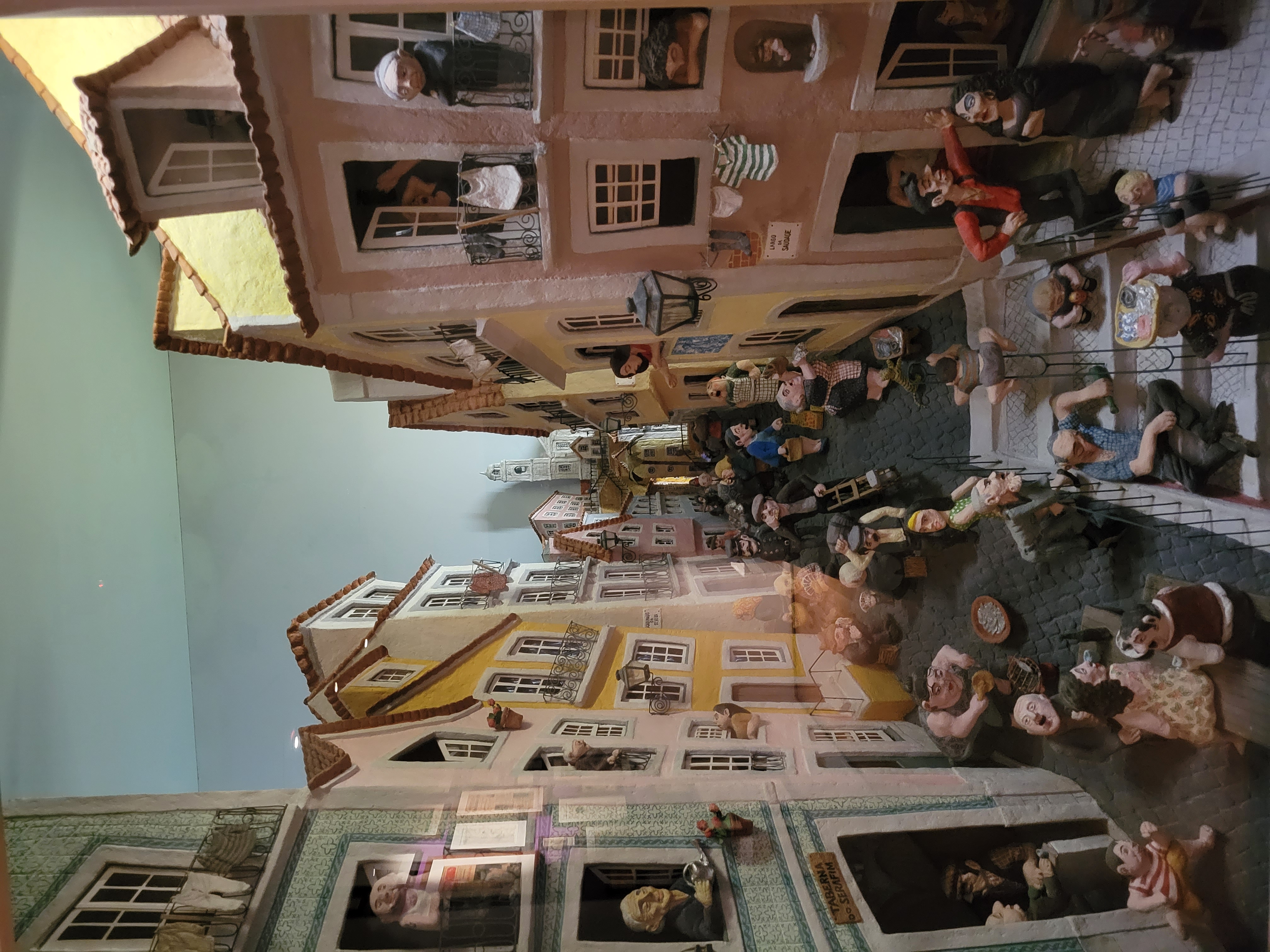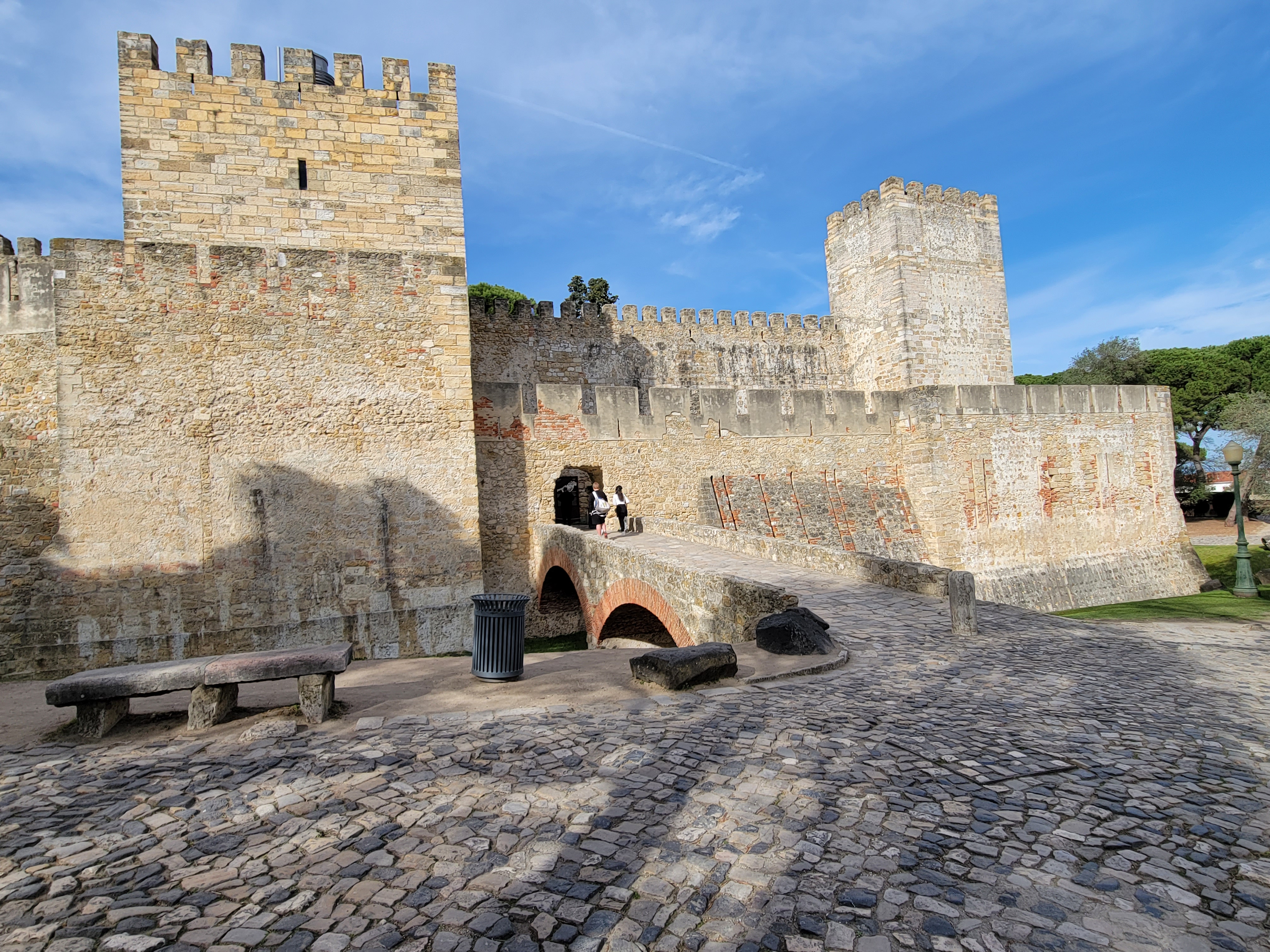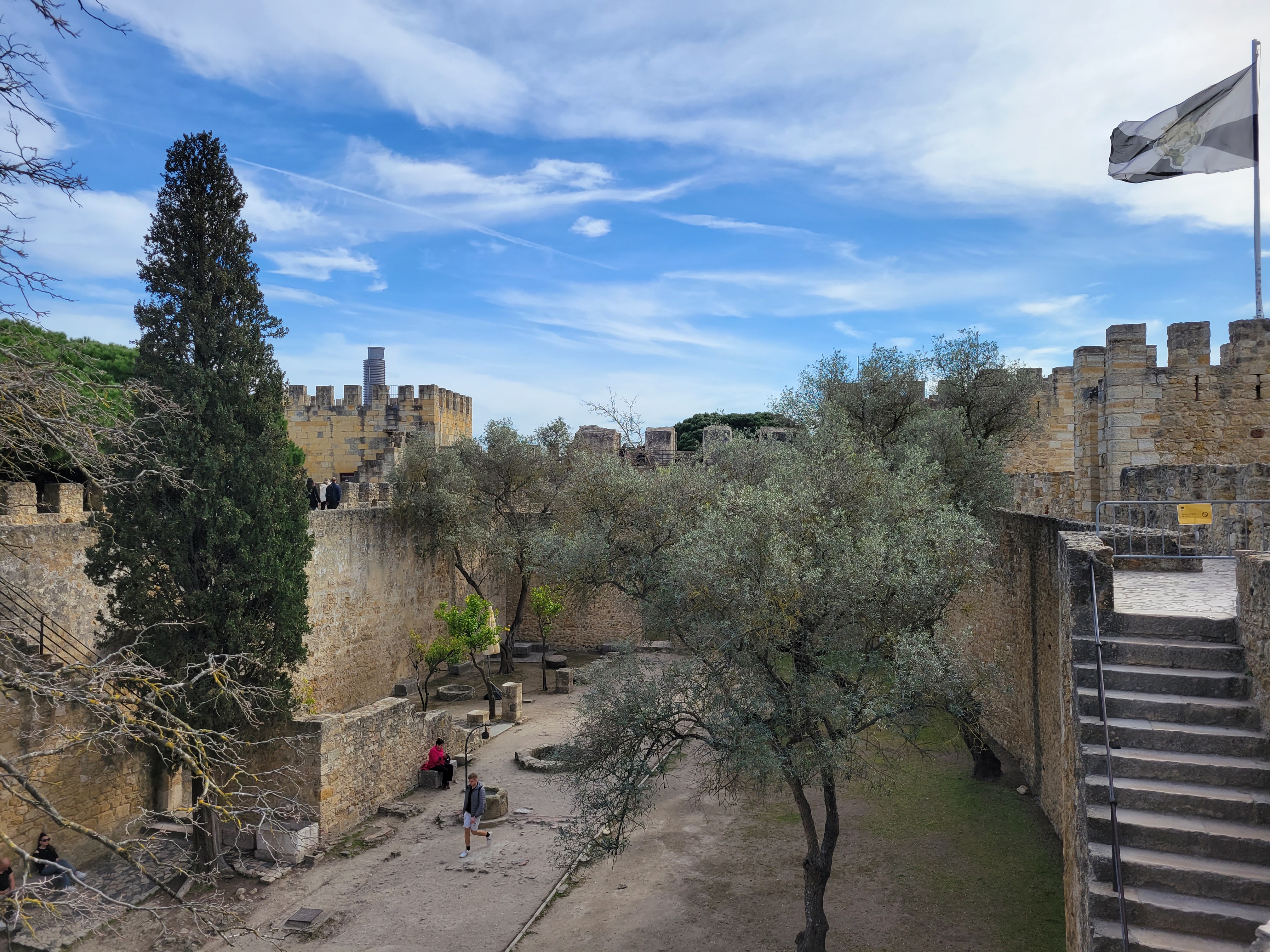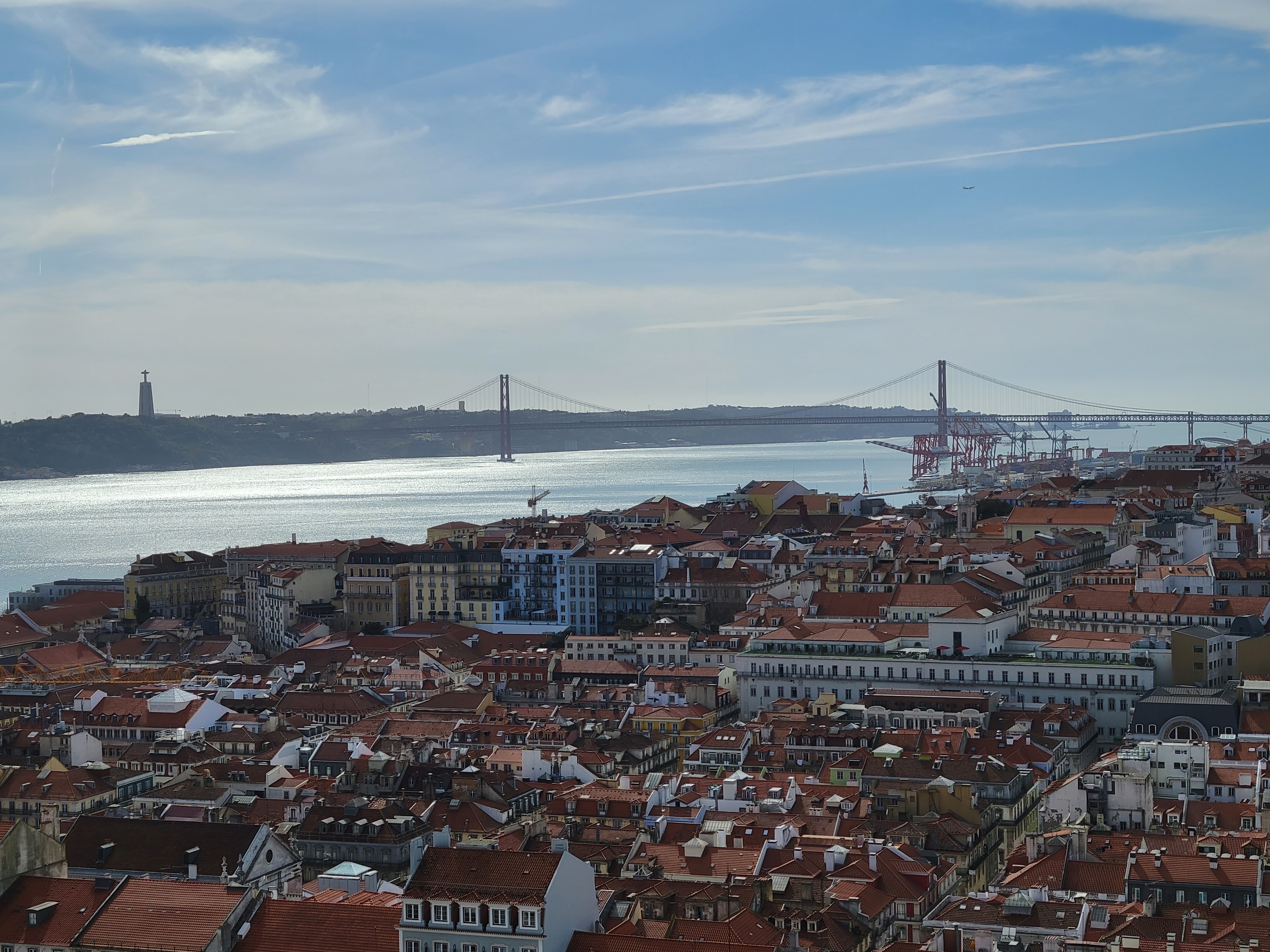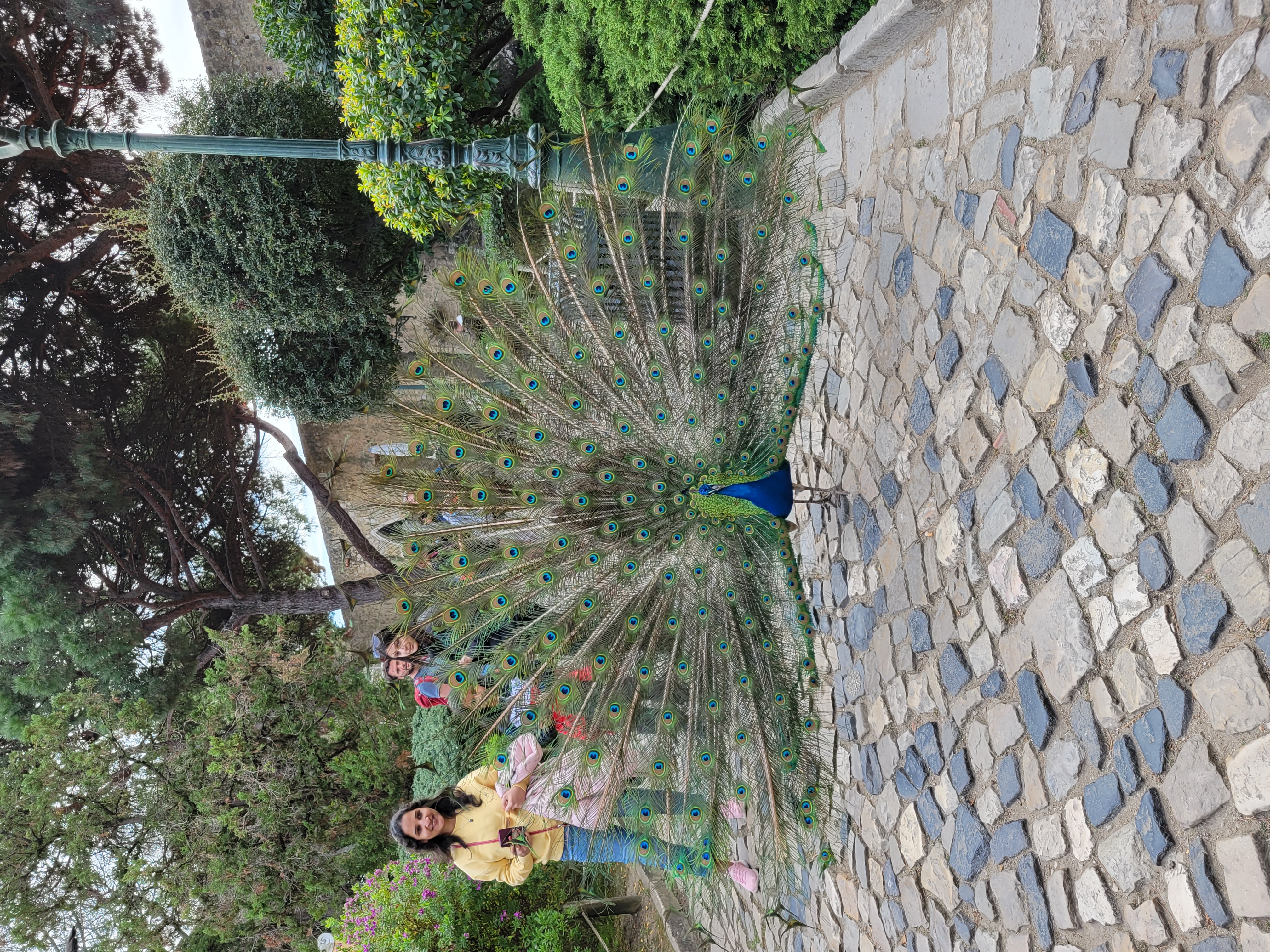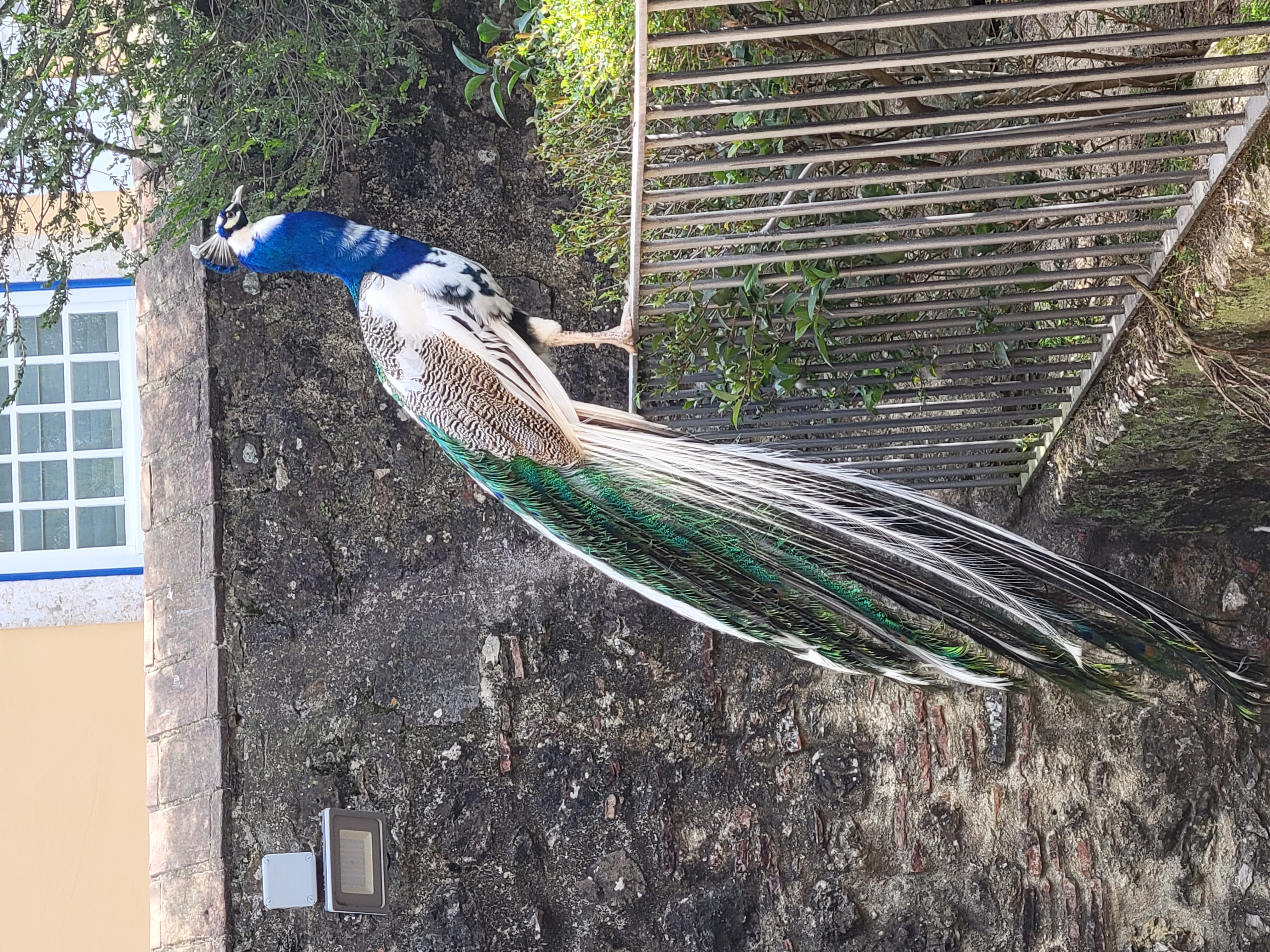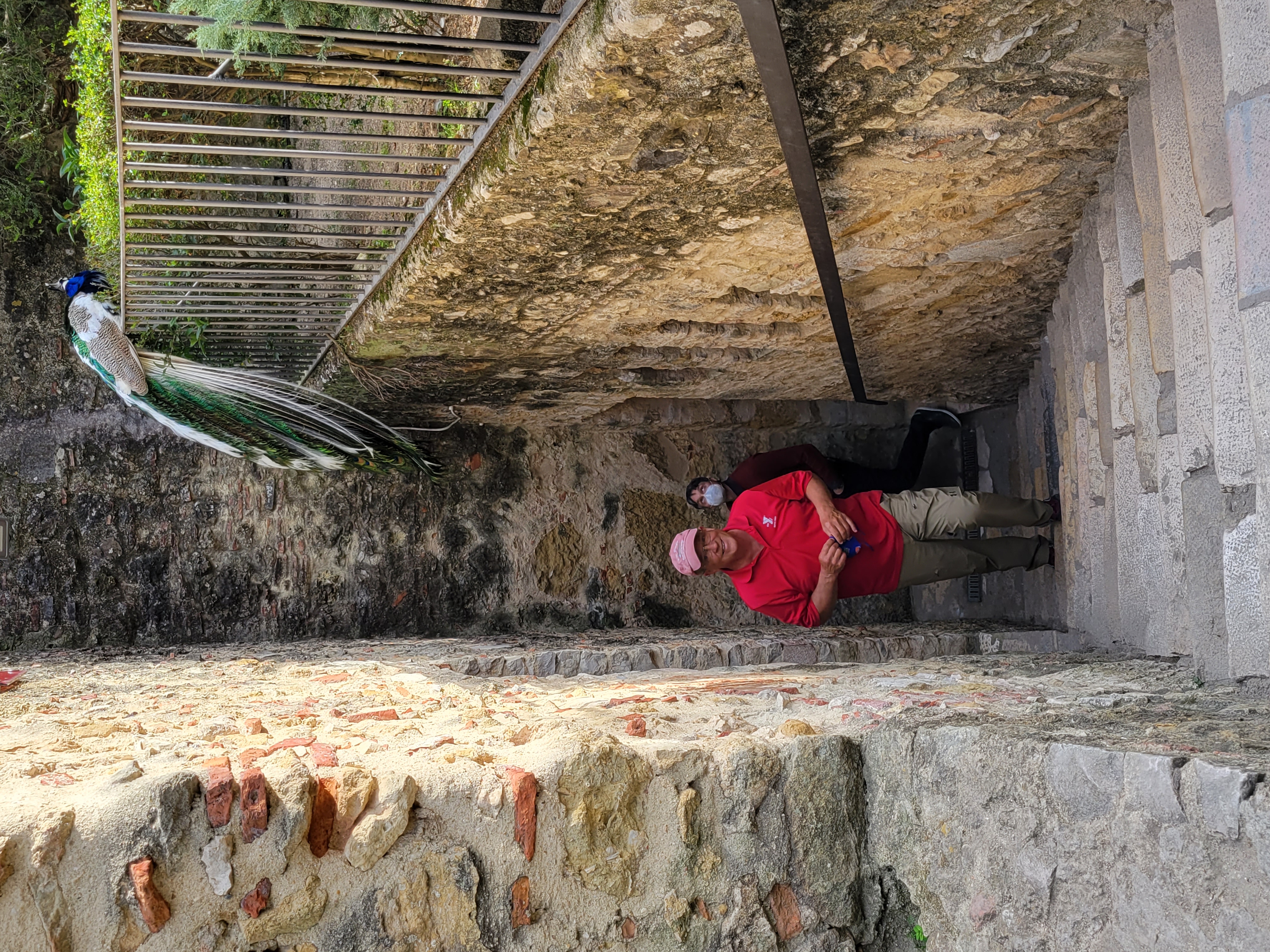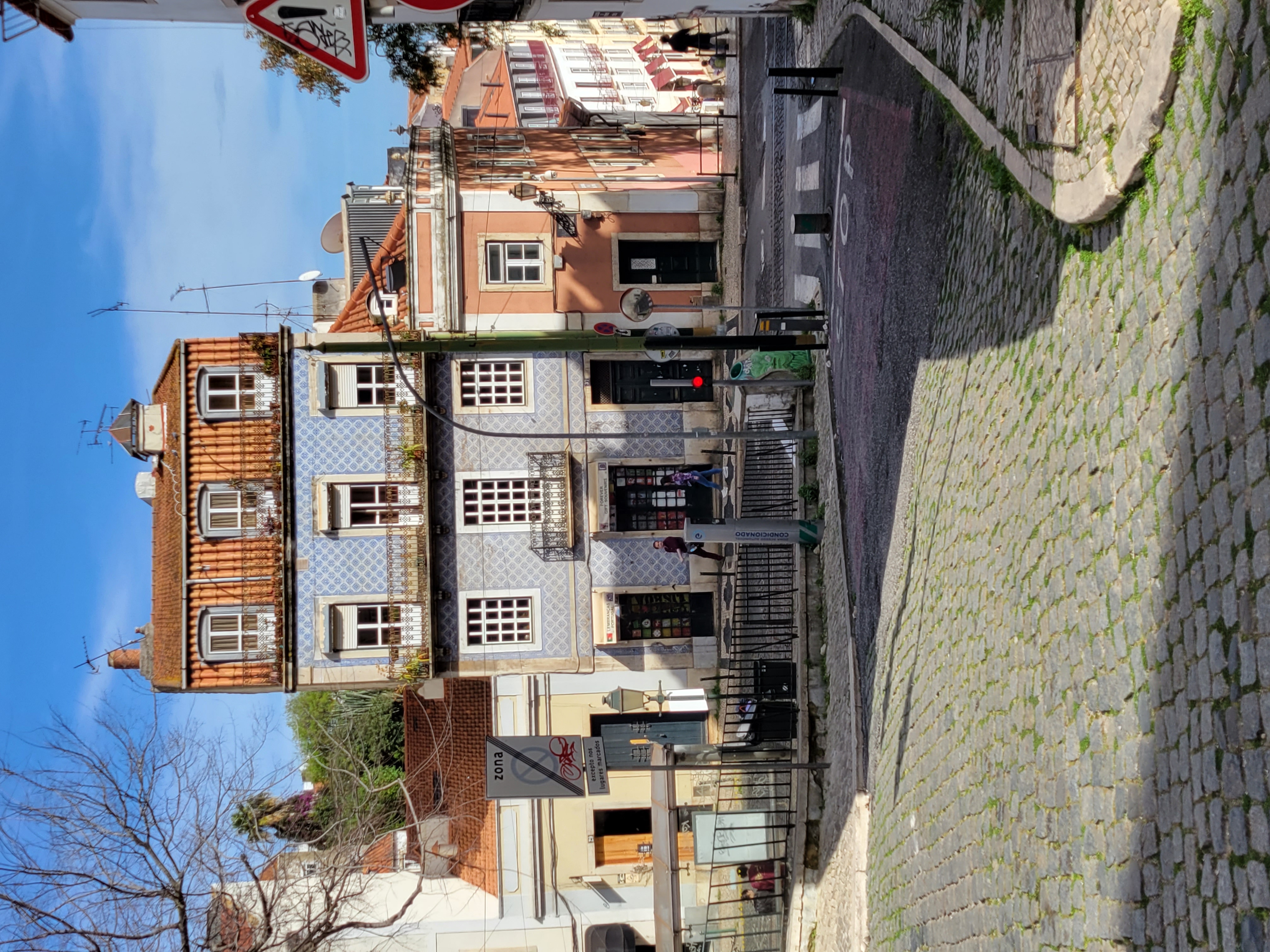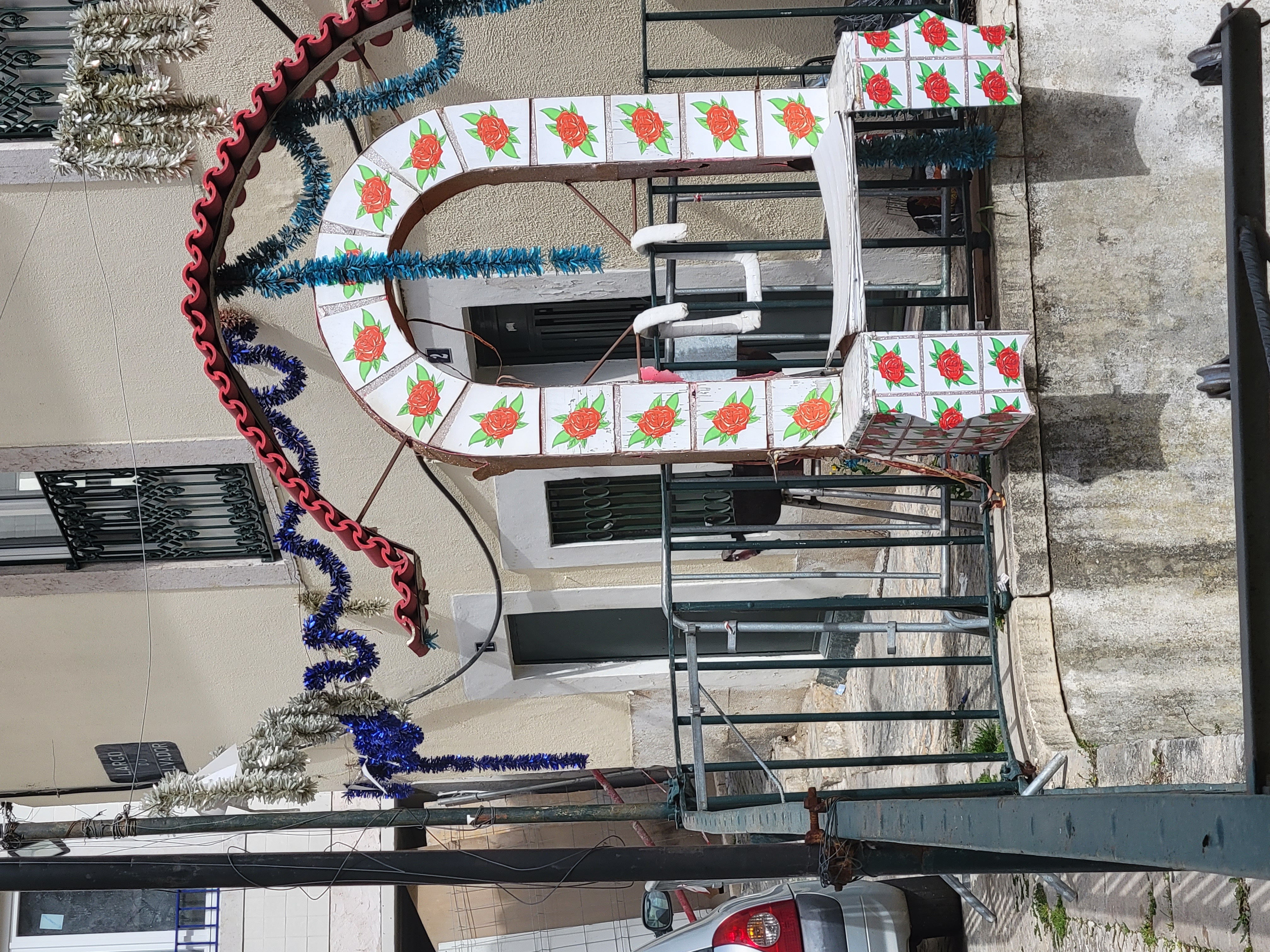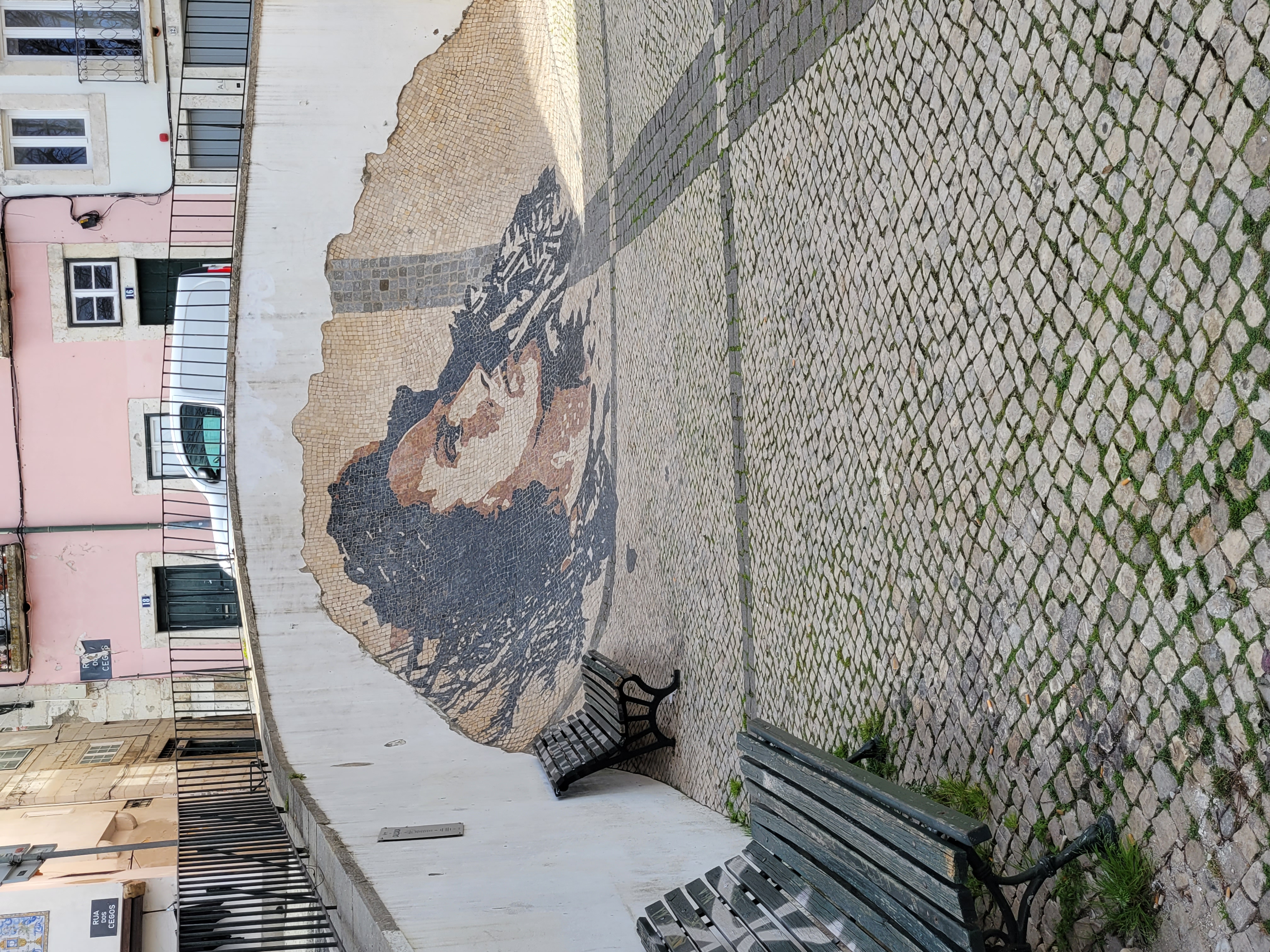0 Lisbon - Day 2
- Janet's Travel Blog
- by Janet Scraper
- 12-19-2022
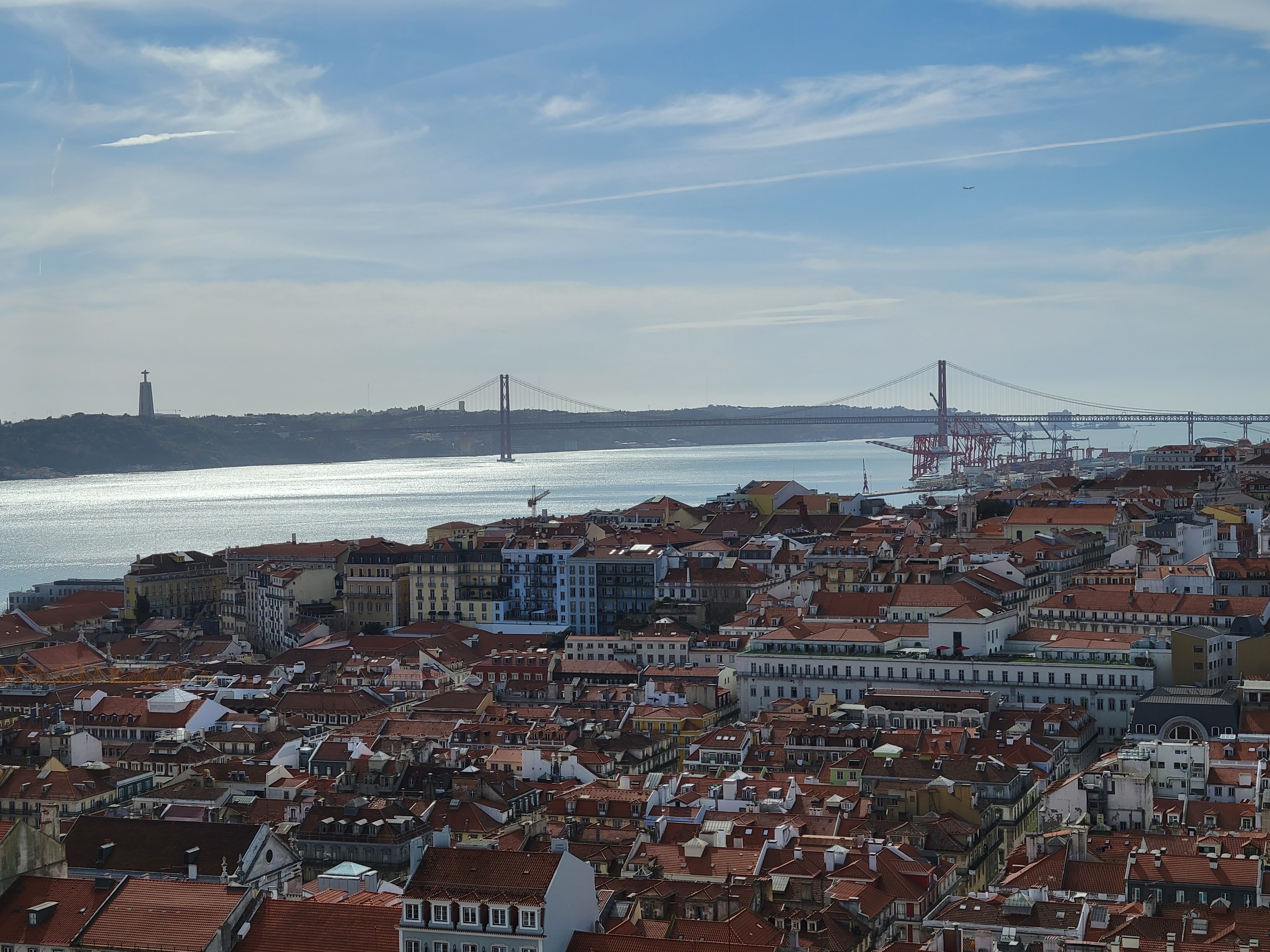
Today we are feeling much better. We woke up around 5 am due to the time change (and early bedtime) but were able to fall back asleep for a couple of hours. Had a leisurely morning drinking coffee, and found we have a great shower. Yeah! Steve couldn’t find his mini i-pad charger, so went in search of one. Found one nearby! Catastrophe avoided!
We headed out around 11 am. It was a beautiful sunny day. We walked one block west over to Figueira Square (Praca de Figueira). This is a happening spot where all the tuk-tuks line up, tram stops, the Rosio metro station, and lots of shops and restaurants line the square. The next block west was Praca Dom Pedro IV, an even bigger square, from which the main pedestrian thoroughfare, Rua Augusta, leads to the Tagus River. We headed south towards the river via Rua Augusta. I was just starting to notice that the sidewalks and pedestrian areas are all tiled in black and white little squares in various designs. Finding new tile designs on the walkways would become an obsession. Rua Augusta has shops and restaurants lining the way, with seating for the restaurants under shade in the middle. We passed the famous Elevador de Santa Justa that will take you up to visit the Carmo Archeological Museum (the ruins of the Carmo Convent - which we will visit another day)
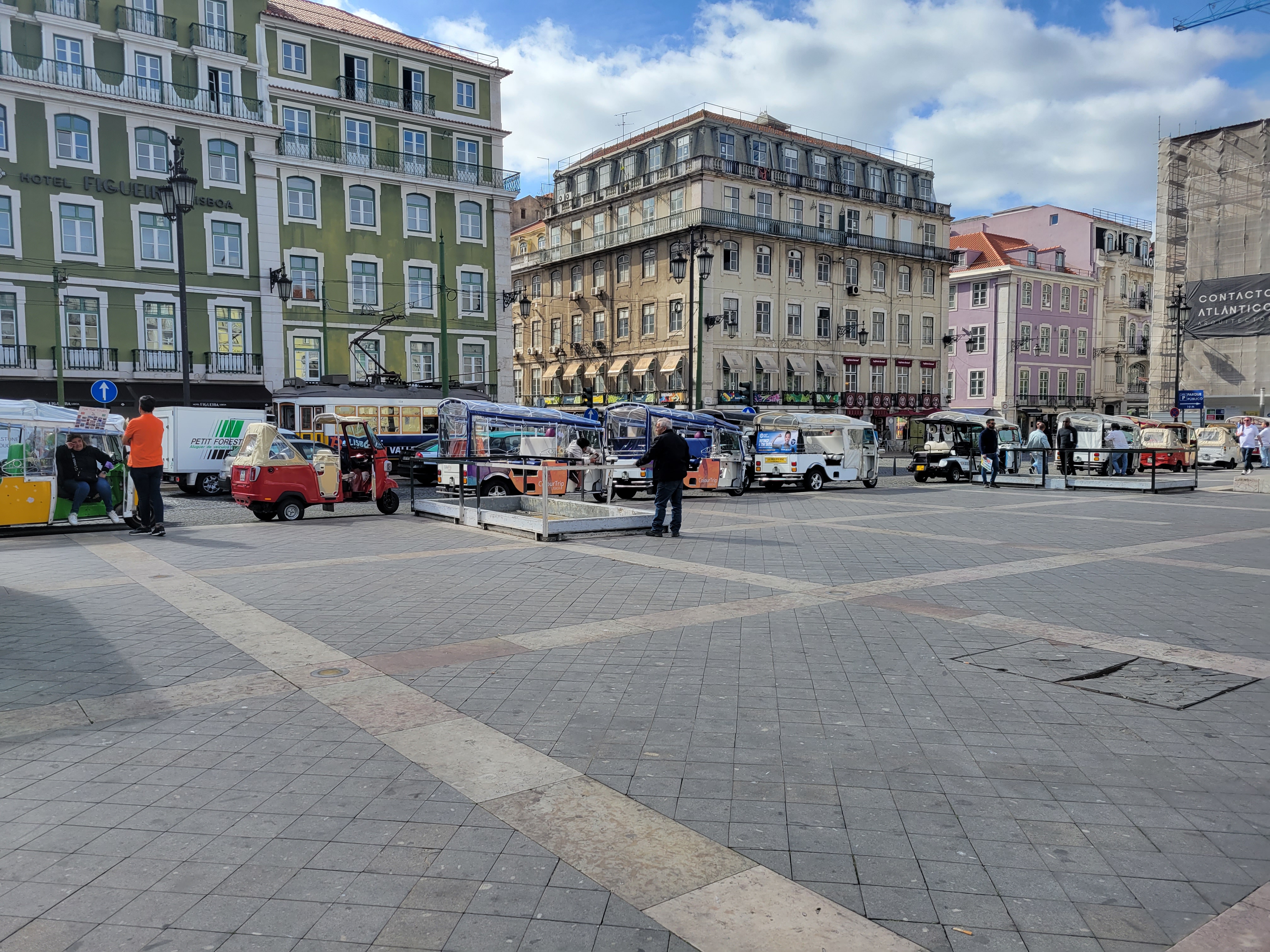 |
.jpg) |
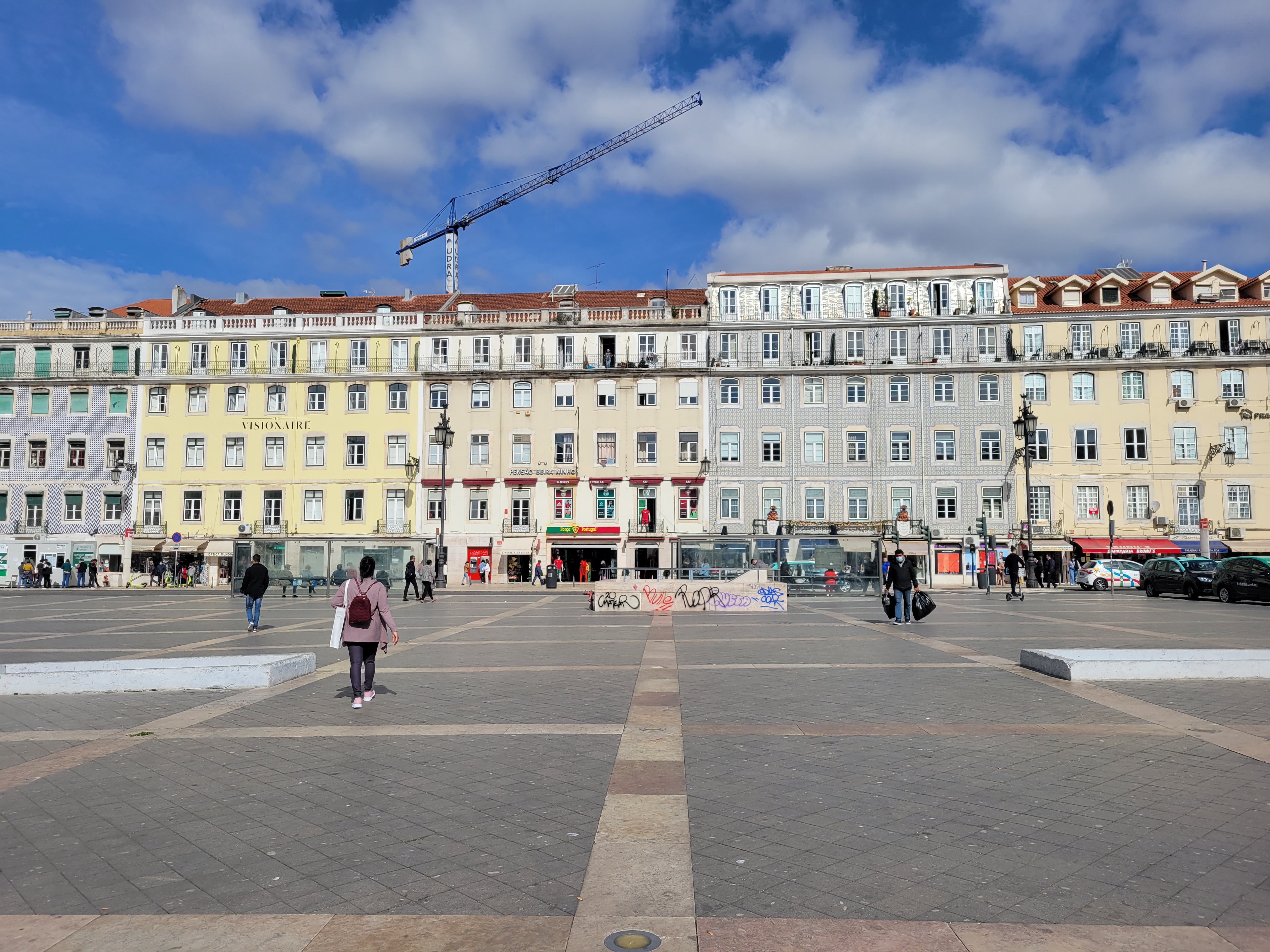 |
Praca Figueira
|
Pedestrian Area |
Elevador de Santa Justa |
Arco da Rua Agusta ahead |
|
Tiles on Rua Augusta |
Praco Comercio & Arco Agusta |
Side Halls of Arco Augusta |
We continued toward the huge archway we could see ahead (Arco da Rua Augusta), which opens onto the main square on the Lisbon riverfront, Praca do Comercio. After checking out the action on the riverfront, we headed east along the river and came to the ferry port (Cais do Sodre). Inside there were beautiful tile mosaics depicting all of the historic trading areas of Portugal. We continued east along the river, past the Cruise Port to our destination - the Fado Museum.
|
|
|
.jpg) |
Mosaics of Algarve town seals
I really enjoyed the Fado Museum. Fado (from the word Fate) is a traditional music genre of Portugal. The current genre can be traced back to at least the early 1820s, but some theories of its origins go back to influences by medieval and Moorish times. The performers from the 1800s were mostly from the working class, namely sailors, bohemians, and courtesans, who sang and danced Fado in taverns. The tales are sad and melancholy, often about the sea or the plight of the poor and loss and longing. The instruments played are the Portuguese Guitar (uniquely shaped12 string) along with other Portuguese stringed instruments. The museum explained the history of Fado, displayed instruments, famous musicians, had samples of Fado music throughout, and some miniature and full-sized mock-ups of the taverns and neighborhoods where the music was played. The museum is located in Alfama, the neighborhood where the music is thought to have originated and is now regularly played in taverns at night.
|
Portugese Fado Guitar |
Fado Painting |
Shadow Box Historic Alfama |
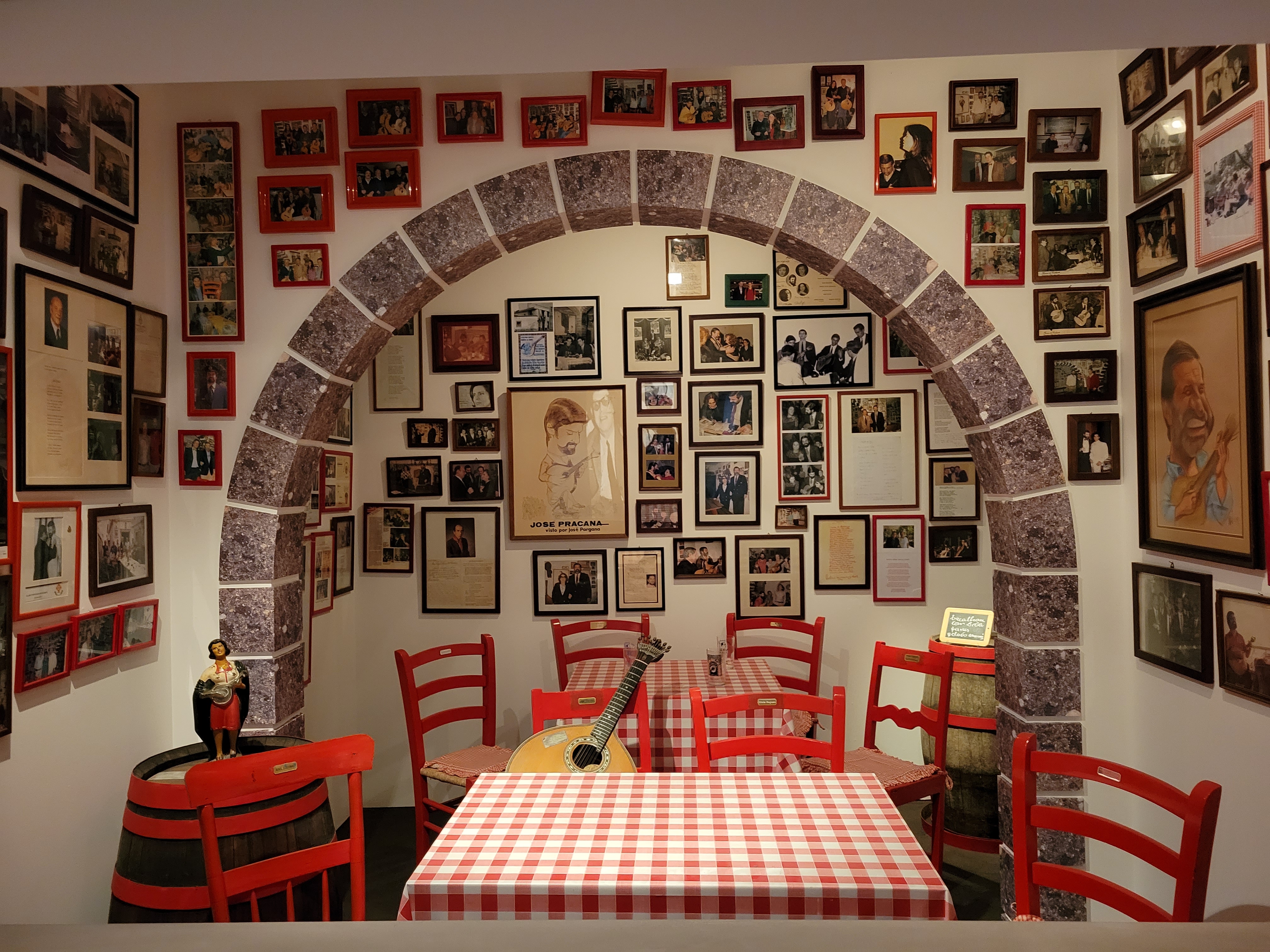
Mock-up of Fado Tavern
After the museum, we headed north up the hill towards Castelo Sao Jorge. Along the way, we found a little restaurant with tables outside (Morgadinha de Alfama) and stopped for lunch. Steve had the traditional grilled sardines (with potatoes and salad) and I had garlic prawns. Very yummy! Steve had a big beer, I had 2 glasses of white wine, and the bill was 30 Euros, including the tip. Compared to south Florida, the prices here are very reasonable, especially for wine and beer.
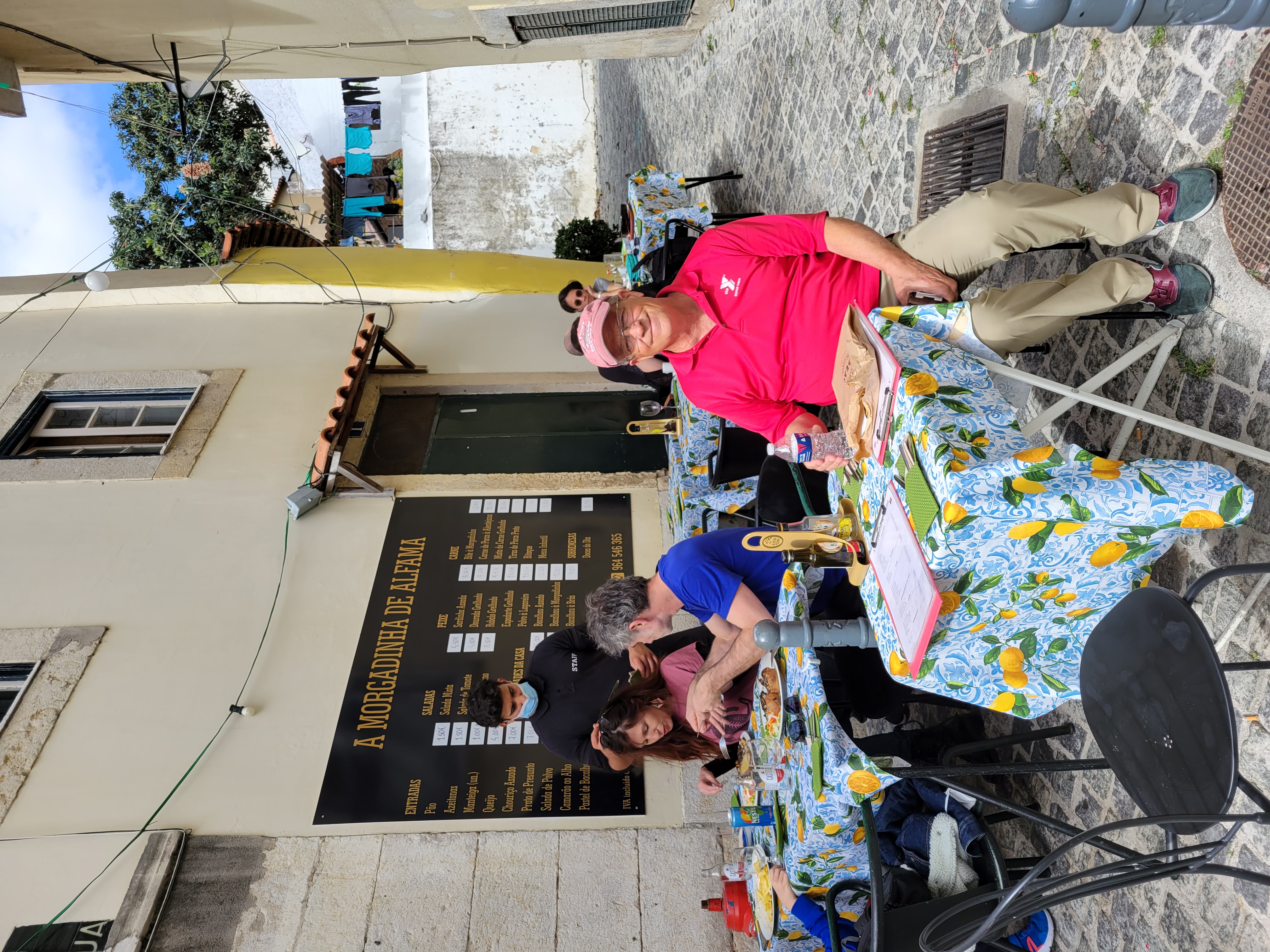 |
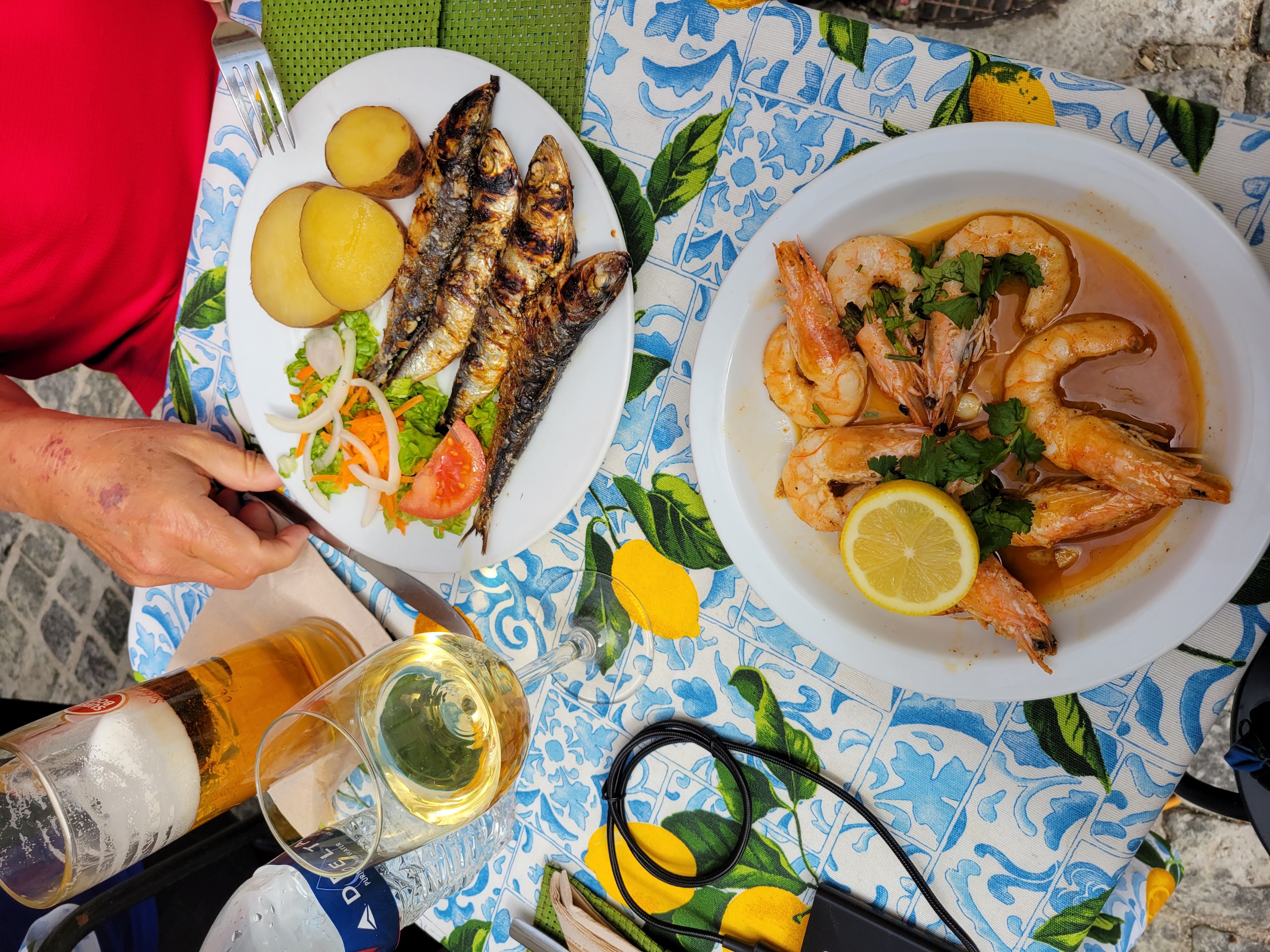 |
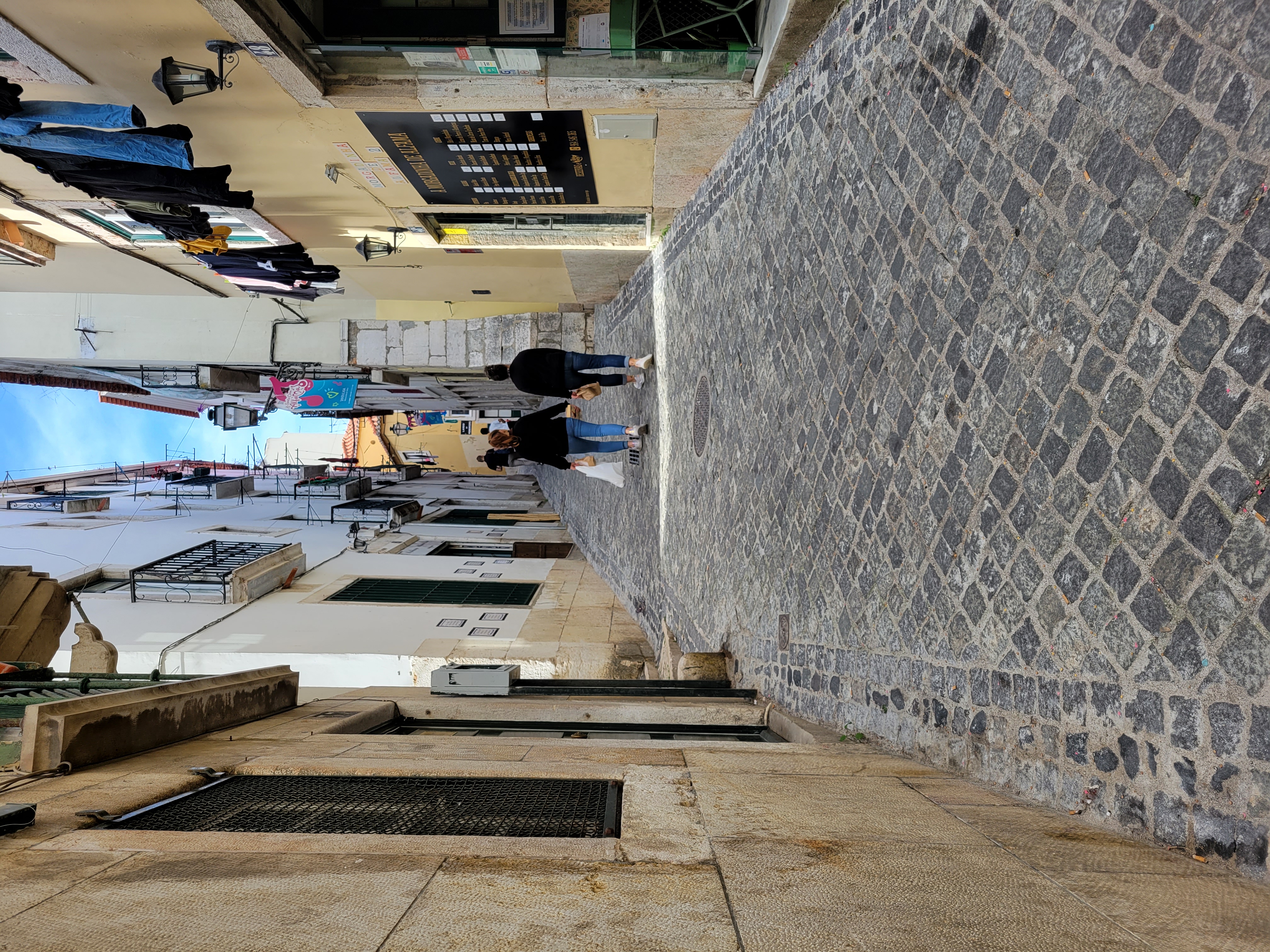 |
Lunch and walk to the Castle
We continued up the hill (very steep) to the Castelo de Sao Jorge, one of Lisbon’s most iconic monuments, located on its highest hill. The current castle was built during 900-1000 when Lisbon was an important Moorish port. There is archeological evidence of Celtic tribes, Phoenicians, Greeks, Carthaginians, Romans, and Muslims, indicating humans have been occupying this area since at least 8 BC. In 1147 the first king of Portugal, Dom Afonso Henrique captured the castle from the Moors and it figured in many historic Portuguese events. An earthquake in 1531 and another in 1755 destroyed much of the castle and there was limited repurposing of the site. In 1910 It was declared a National Monument and during the 1900s careful restoration work was carried out, resulting in the monument you see today.
|
Castelo Sao Jorge Ramparts |
Castelo Sao Jorge interior |
Tagus River view from Castle |
|
Peacock |
Peacock |
Stay to the right, Danger above! |
The castle grounds are delightful to stroll around, learn the history, see the panoramic vista of Lisbon from its highest hill and enjoy the park-like settings scattered throughout. Many peacocks were strutting around, putting on a show. Plan a couple of hours to cover the castle and the surrounding neighborhood, Alfama.
|
Scenes around Alfama |
Celebration Decorations |
Cool Mosaic |
After a casual stroll around the neighborhood, we walked down the other side of the steep hill toward home. Back at 4:30 pm. We made a sandwich from our grocery supplies, opened another bottle of wine, and settled in to relax for the evening. I tried to connect the Amazon Fire Stick I brought but couldn’t figure it out. (never did) However, our TV got Netflix and lots of American channels (unusual). We watched several episodes of the new season of Emily in Paris. Went to bed around 12:30 but couldn’t fall asleep. The change in time zones is a bit disruptive, but we adapt fairly quickly.



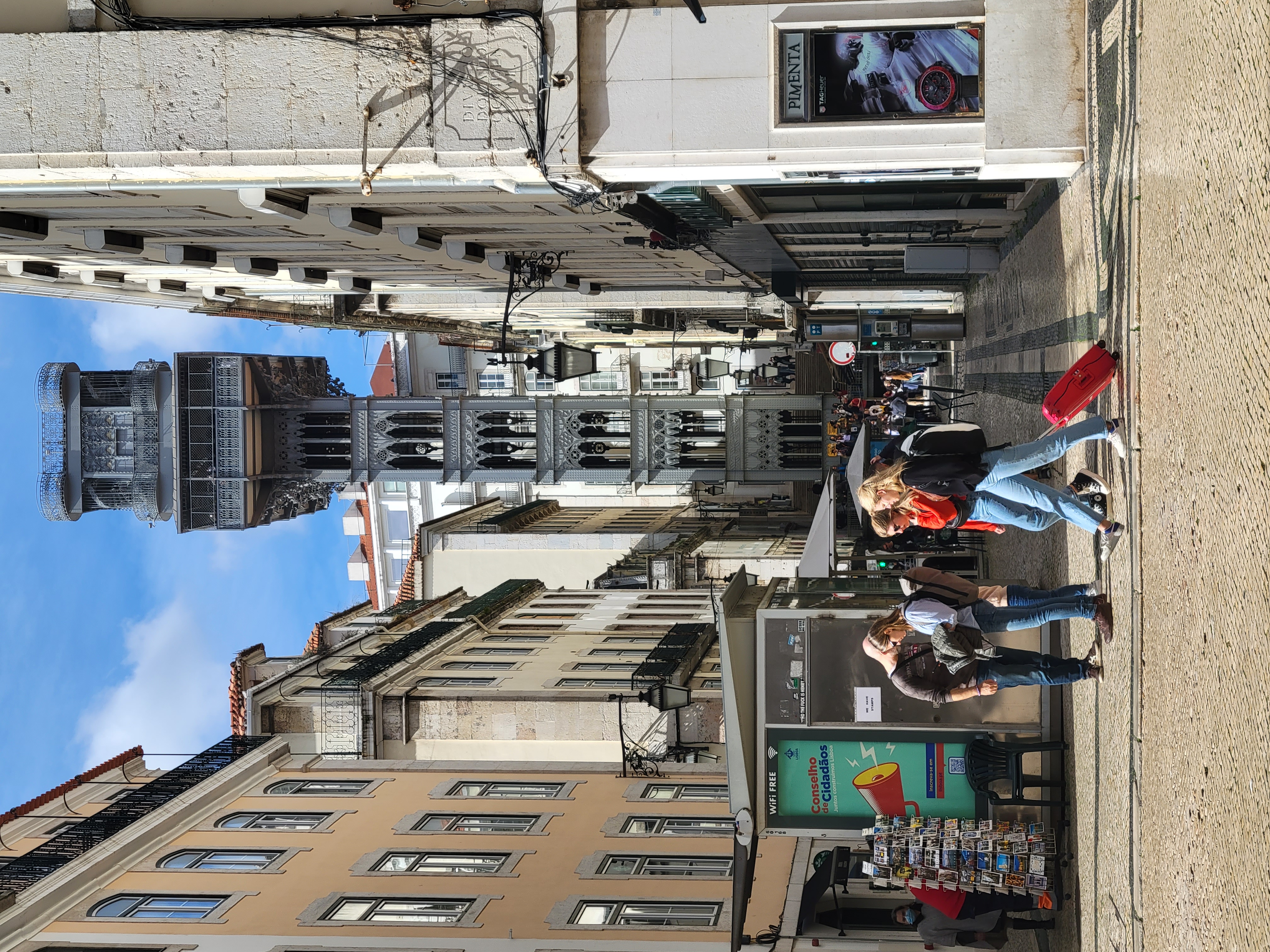
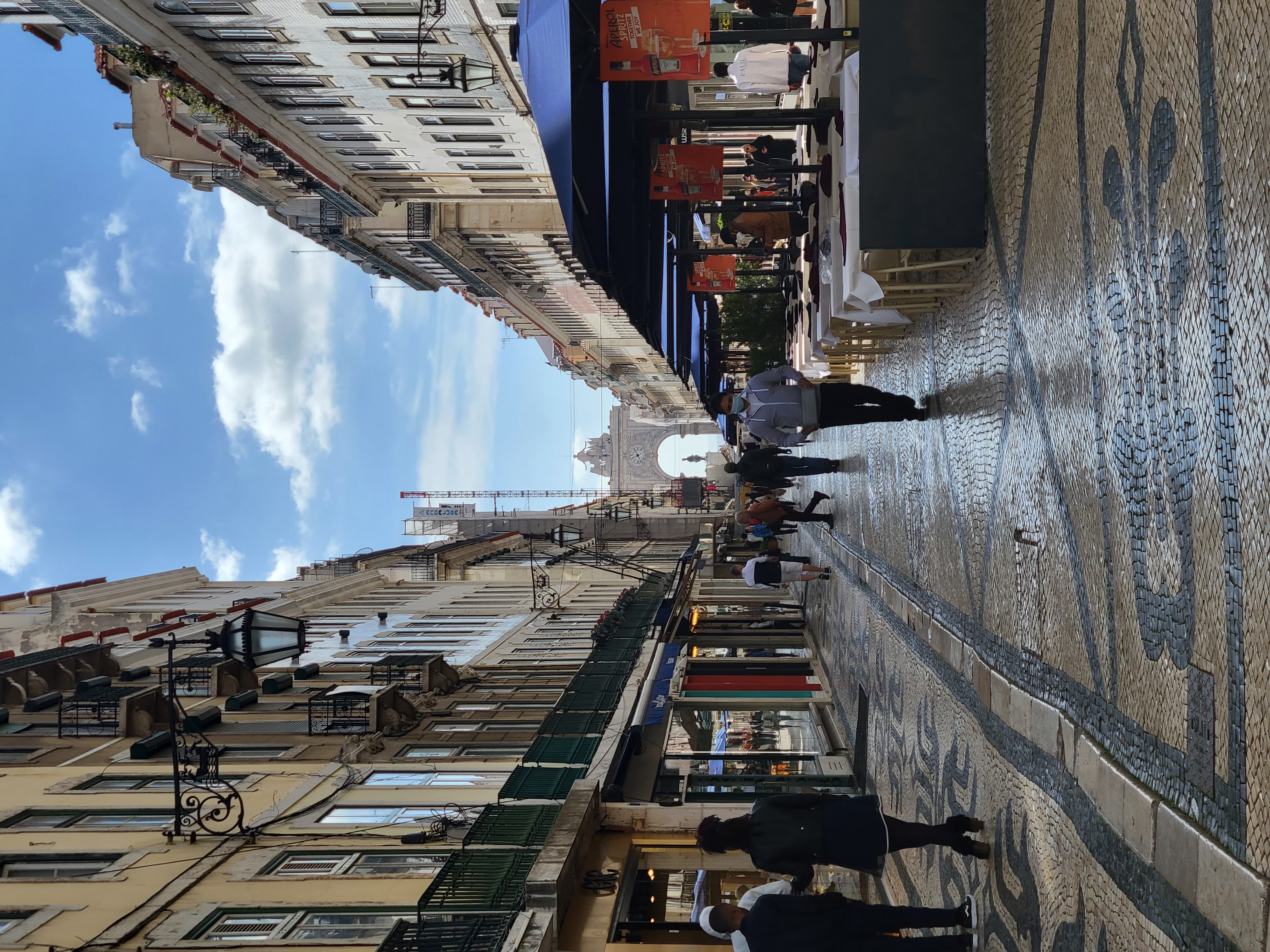
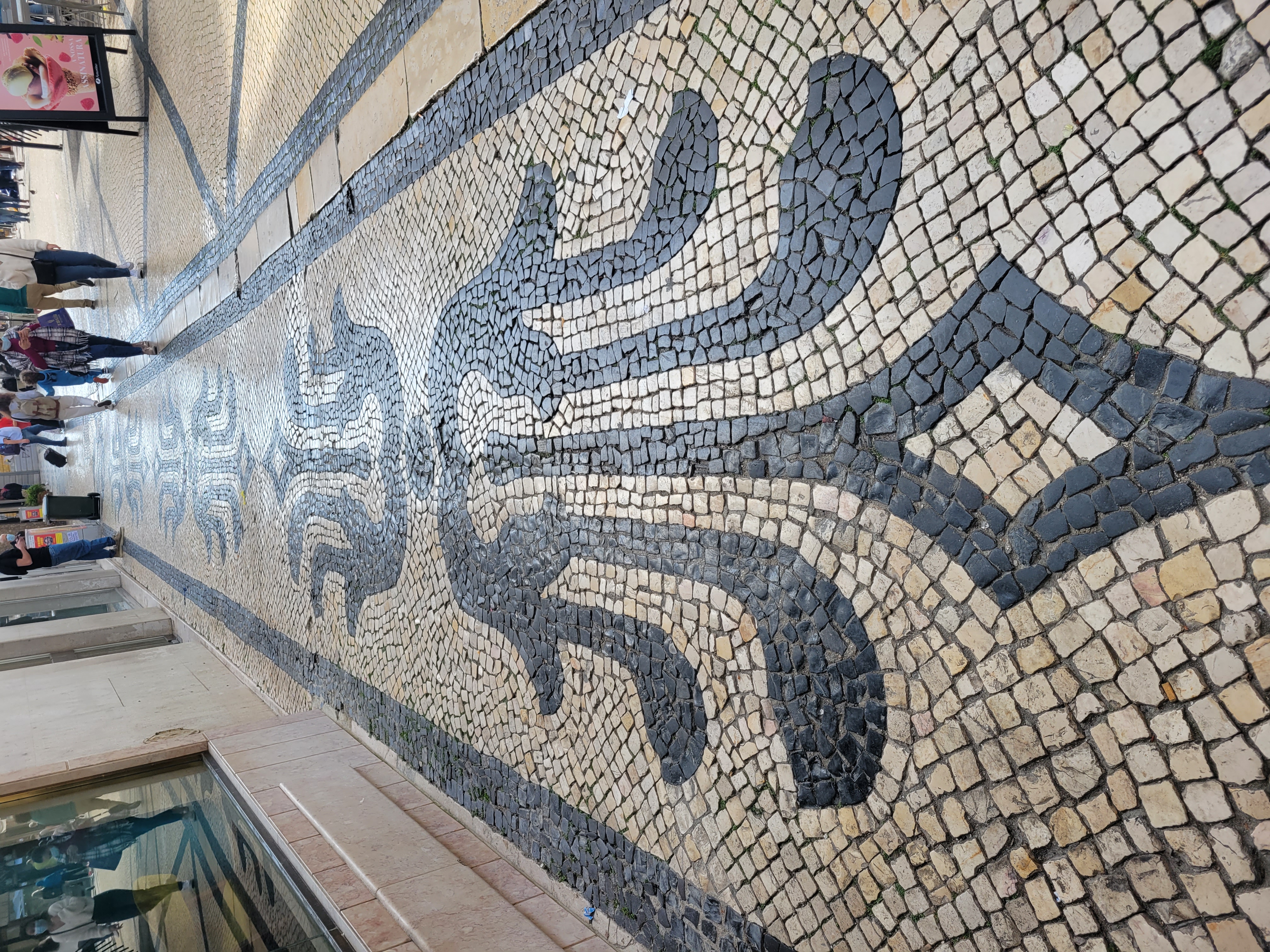
.jpg)
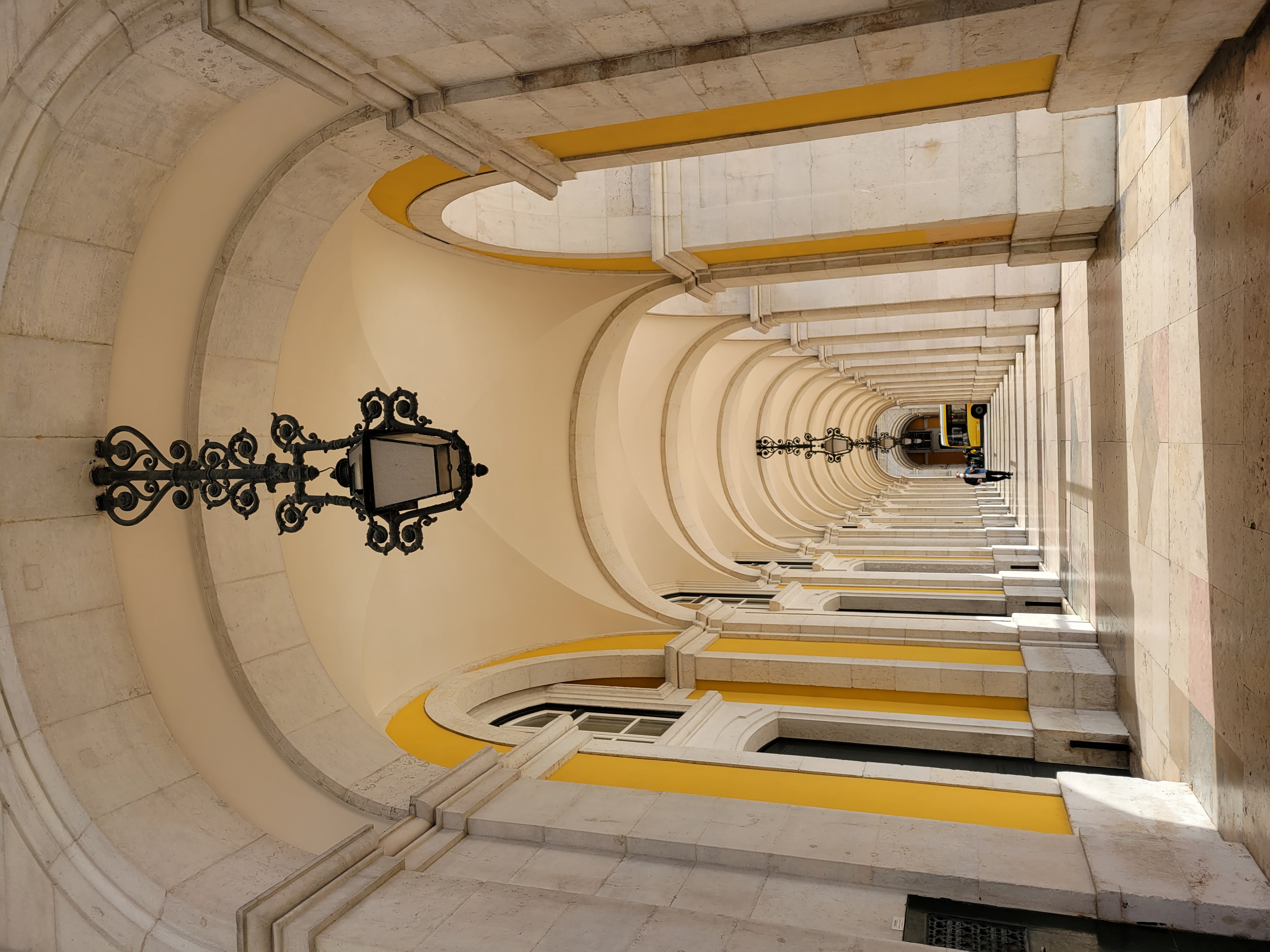
.jpg)
.jpg)
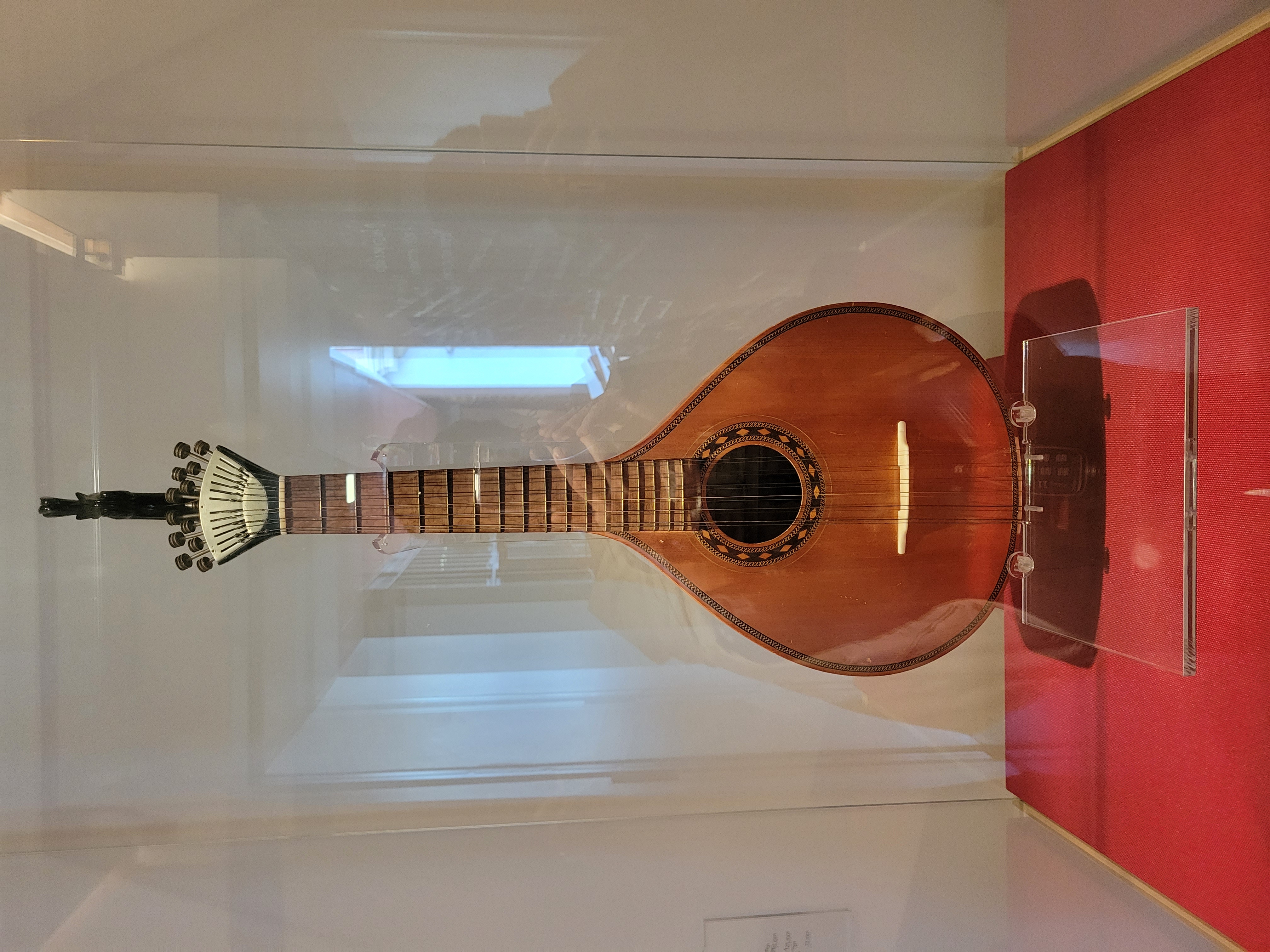
.jpg)
